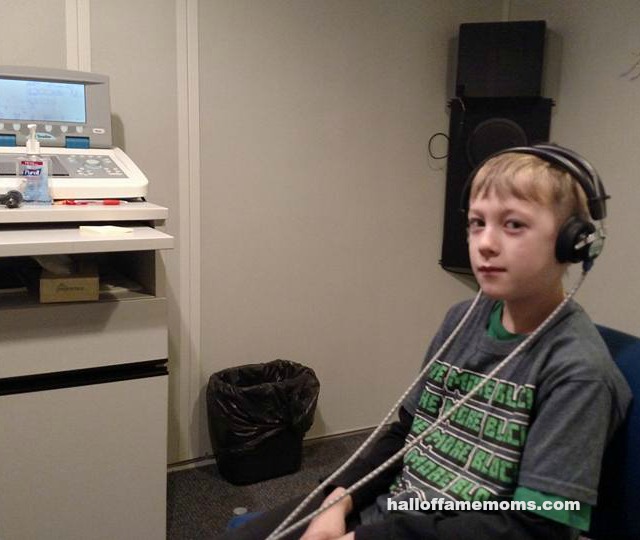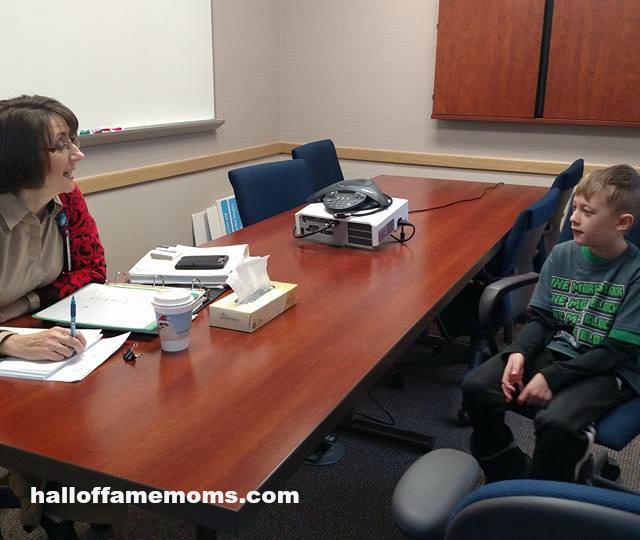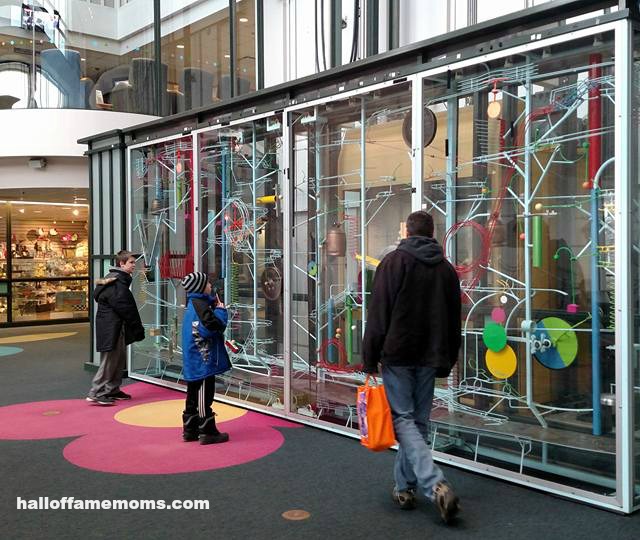Last Friday our youngest son, Jack, had his annual visit at the Akron Children’s Hospital Craniofacial Center. In order to keep our BCMH insurance (Bureau for Children with Medical Handicaps available to residents in Ohio) we have to make this appointment. The craniofacial center monitors children with cleft issues throughout their childhood.
Jack was born with a partial soft-palate cleft. His uvula had not fused. From what I understand, that stage in a baby’s development in the womb should have occurred around the eighth week into pregnancy. A lot of us don’t even know we’re pregnant that early! I am using my affiliate links in this post to link to useful resources.

So Jack’s uvula was split and I wasn’t even aware of it till he was about a week old.
I think, because I had preeclampsia and had to have an emergency c-section around the 34th week of pregnancy and Jack was admitted to the NICU, that the cleft was just not something the hospital staff felt I needed to know about right away. And, truly, there was nothing to be done for it.

Waiting to be seen.
My husband said someone pointed out something to him but he didn’t fully understand what they were referring to. I don’t remember him saying anything to me. So, about a week after Jack was born while holding him, I noticed his throat didn’t look right, but I couldn’t figure out why.
Jack’s cleft couldn’t be repaired until he was a year old and no longer needing a bottle. We tried and tried to make a go with nursing but it just didn’t work for him.

Getting his hearing checked.
By the way, I did pump breast milk for the first 10 months of his life and gave it to him by bottle so he would get the nutrients that were best for him. It was tough dealing with a 2 year old, a preemie, and pumping. It took twice the effort to feed him once.
Kids at the cranio center are seen by about seven different specialists who monitor everything from home life to the state of their cleft issues. I thought it would be nice to do a post about our annual visit, and it might be helpful to some people who are just getting started down this road with their own cleft-babies. Which brings me to the subject of BCMH.

Meeting with speech therapist, Patricia Stone, to evaluate his speech.
BCMH insurance is a secondary form of insurance. BCMH clients are assigned a nurse case worker who meets with the family at home about once a year to make sure needs are met and paperwork is filed. We’ve had very nice nurses over the years. I don’t have any complaints about any of them.
With BCMH it seems we never have a bill. We’re hoping that continues as we lost our insurance when my husband lost his job in November. He is still looking for a job and to stay compliant with the Obama-care “law” we had to find some form of insurance in the meantime.

Dr. Mellion checks for orthodontic issues.
Our appointment at the clinic usually starts around 8:30am and ends around lunch. Like I said, the kids see about seven specialists. We sit in the waiting room between each call to see the next doctor.
Years ago it was crazy. There would be SO many families at the clinic at the same time…I think it was like a five hour day for us as the clinic would close for lunch and then open up again.

Meeting with Genetic Counselor Joleen Viront.
They have really improved the system now and they continue tweaking it so they can avoid having so many families there at the same time. We’re fortunate to be in the first wave of the day. We’re also fortunate that friends of ours from church who have a cleft child show up on the same day. It’s nice to see a familiar face.

Social Worker, Michele Mizda, asks Jack about home life and school.
I’m thankful that BCMH will cover Jack’s orthodontic needs, too. Fortunately, Jack has not needed any additional surgeries. Hopefully it stays that way!
At the time of his cleft surgery, he also had surgery to put tubes in his ears. They fell out a long time ago and he’s been fine. Before his cleft surgery, as a baby, he would blow food through his nose because with no fused uvula to block food being swallowed it would find it’s way up there.

We meet with Jennifer Huth, Staff Nurse.
We’ve been fortunate that Jack hasn’t had much if any drama regarding his cleft since his recovery from surgery. He’s healthy, his orthodontic needs are being met and he has no speech or hearing problems.
Even so, our annual visit usually takes a couple hours or so to get through. The office encourages parents to bring snacks for the kids and the office itself provides juice and snacks for the patients.

Our last meeting of the day is with Dr. Murthy, surgeon.
I think if there’s anything else he would need down the road it could possibly be an additional cleft surgery in case his repair would turn out to not be big enough as he grows. But, so far, he’s fine and no one has suggested to us lately that we would need that. But, that is why they monitor cleft kids.

We always end our visits with a walk across the bridge to see the ball-maze in the hospital lobby.
At the end of our visits, if it’s just me bringing the boys, I usually take them to see the ball-maze and to eat lunch in the hospital cafeteria.
Since my husband is out of work and was able to attend the appointment with us this time, we just visited the ball-maze and then grabbed lunch elsewhere – to the disappointment of one, if not both of the boys. See, some people really do look forward to cafeteria food!
…………………
If you don’t have dental insurance this might help you.









Thanks for sharing your encouraging story, Julie!
My daughter is now 20 years old but she came to the cranio-facial clinic at a week old, one day after her cleft palate (soft) was found.
We were in shock but the clinic took good care of all of us that day and the few years later.
My daughter later did a service project for the clinic in her teens.
Hang in there parents. It is a journey but in time this will be no big deal.
I will tell him 🙂
This is an interesting blog. I have often wondered what all Jack goes through at those yearly visits….now I know and I also get to see the attending physicians…very interesting. Tell Jack to keep up the good health and the great visits!